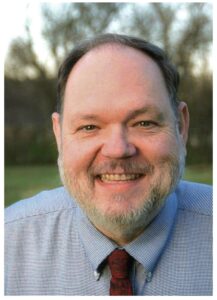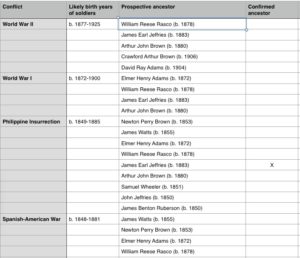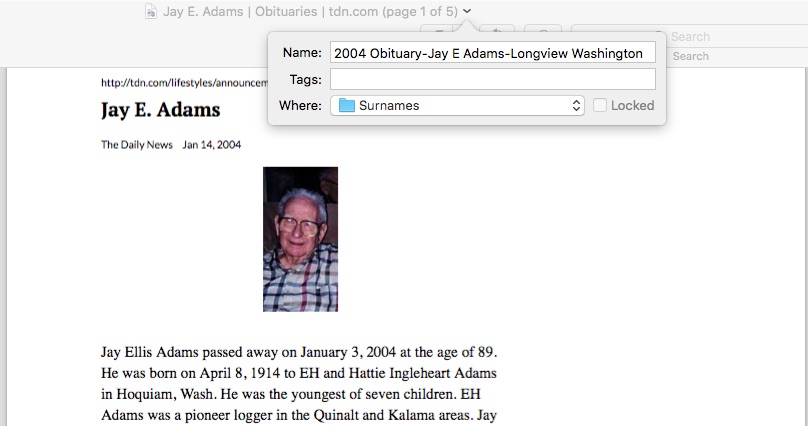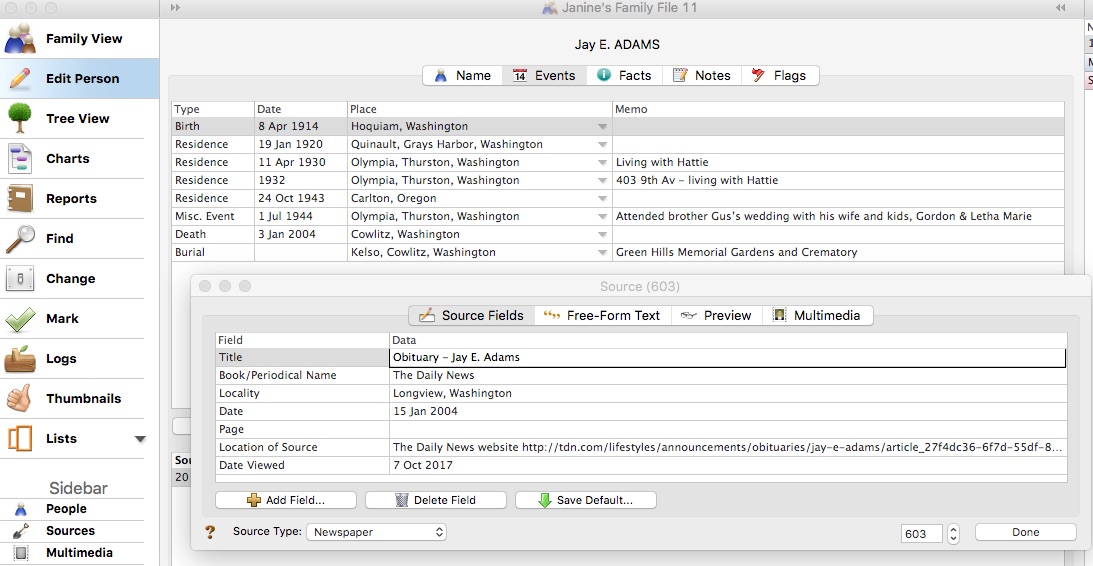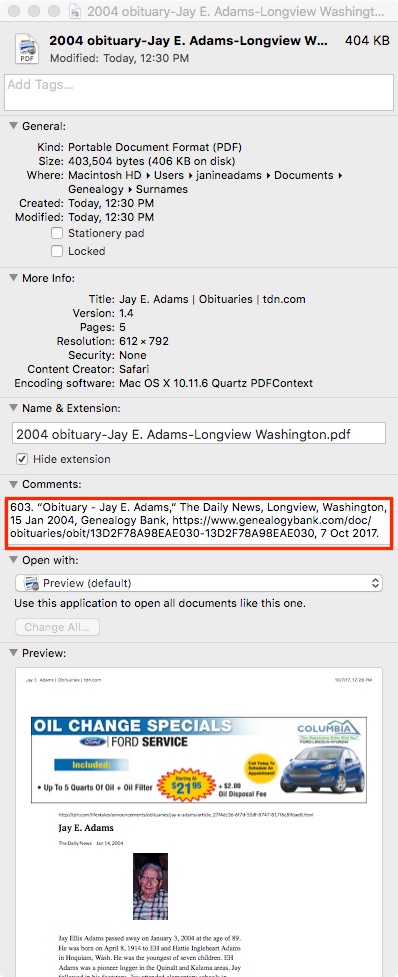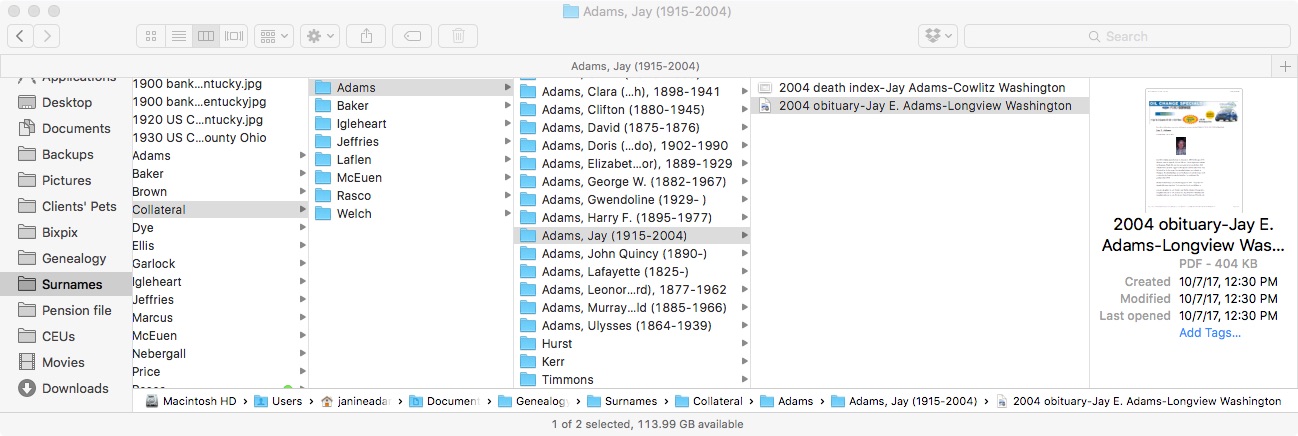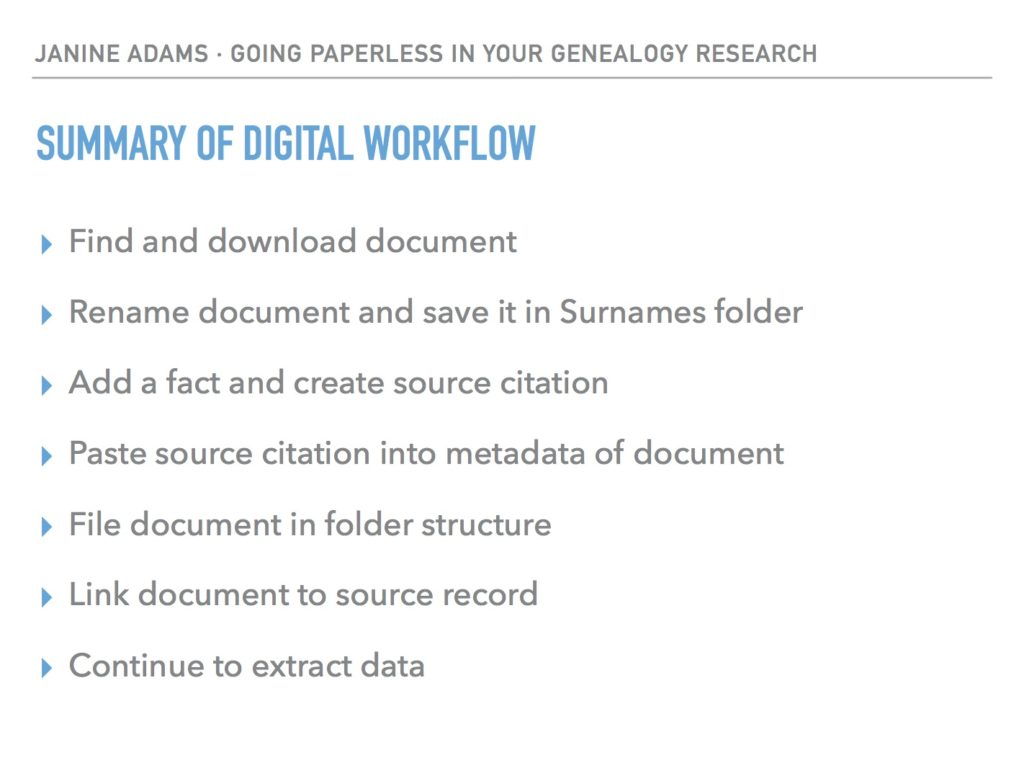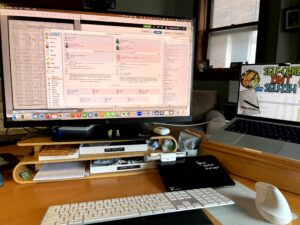 I first published this post in 2016 and it seemed to be helpful, so I thought I’d run it again. I’ve updated it a little to represent current practices, but very little has changed about my process in the last seven years!
I first published this post in 2016 and it seemed to be helpful, so I thought I’d run it again. I’ve updated it a little to represent current practices, but very little has changed about my process in the last seven years!
I love organizing my family history research electronically. As I’ve mentioned here many times, I try not to print digital documents and instead store everything electronically where I can have easy access to it.
I don’t think I have been clear when I talk about storing my genealogy data electronically that I’m not talking about storing it as a family tree on Ancestry or Family Search. I’m talking about storing it on my hard drive.
To me, it would be folly to rely on an outside service to store my precious genealogy data. If the only copy of my information was at Ancestry, I would be required to renew my subscription to access my own data. Even storing all my information at a free site like Family Search feels risky to me. In addition to the fact that at Family Search there’s a single tree that anyone can change, it’s conceivable that they could change their terms of service to something unacceptable to me. Or start charging for access. Or simply vanish. Another place that some people store their genealogy documents is Evernote. I think that can be a great way to have easy, searchable access to information. But I wouldn’t store genealogy documents on Evernote that I don’t also have on my hard drive. They could go belly up. (It happened with Springpad.)
I enter all of my data into family-tree software that resides on my laptop’s hard drive. I use Reunion 13, a Mac program. It can sync with the iPhone and iPad using the ReunionTouch app. I like that storing my data on my computer, rather than an online service, is that the information is accessible even when I don’t have an internet connection (if I have my computer with me).
Of course, I back up my hard drive, both on an external hard drive via Time Machine and with an online backup service (Backblaze). Backing up is critical.
I’m not saying that my way is the right way or the best way. But I’ll share with you my process for storing info, in case you find it helpful or interesting. So far, it’s working well for me.
When I find a sourced piece of information pertinent to my research this is what I do:
- Add the information to the appropriate person(s) in Reunion (or add a person if need be).
- Cite the source in Reunion.
- Download the information (or scan it if I found it in paper form).
- Attach an image of the source document to the source citation in Reunion.
- File the digital document in that ancestor’s electronic folder on my hard drive, copying it if it applies to more than one ancestor.
- Scour the source for further information.
- Make a note in Evernote if it sparks potential further research.
So far this feels good to me and I haven’t second guessed it.
How do you store your family tree information?
If you’d like a deep dive on how I organize my genealogy research, check out my Orderly Roots Guide, How I Do It: A Professional Organizers Genealogy Workflow.
